I've found a potentiometer which controls the heat of a cook top. One of the outer pins and the centre pin were shorted with a soldered jumper. Why would someone do that? What does this achieve?
2 Answers
Tying the wiper and one end pole together effectively turns the potentiometer into a simple variable resistor (or "rheostat").
It no longer functions as a voltage divider would, but it does mean that in the case of a failure of the wiper contact (intermittent contact with the carbon track), you'll still have a known maximum resistance value, instead of becoming an open circuit.
Depending on how your cooker works this might be a crude failsafe to reduce the heat in case of a failure of the wiper. I would still expect other failsafes to be in place too of course.
It is not unusual for a 2 pole variable resistor of equivalent ratings to be more expensive than a potentiometer, so to save cost sometimes a designer will choose to use a pot and simply tie the wiper to one end.
EDIT: Thanks to @winny for reminding me that "rheostat" is another name for a variable resistor.
-
5A rheostat would be another name for it. – winny Dec 12 '16 at 17:59
-
1Thank you Wossname, this is very likely to be the case, I also checked and the cooker goes to full power if the control is left open circuit. – user1937747 Dec 12 '16 at 18:05
-
When working normally, the wire will short out part of the length of the carbon track. This means that you can never measure more than 10K ohms between pins 1 and 3. Consider a 2 pin variable resistor - if the wiper fails you have effectively INFINITY ohms because there is nothing there to conduct through. This may be a bad thing in some situations because a circuit may rely on the value being between 0 and 10K ohms for safety. – Dec 12 '16 at 18:11
-
3@user1937747, be careful not to damage the pot during your experiments then. In any case, it's likely that there will be a thermal fuse somewhere within your appliance that will protect you in the case of a broken potentiometer. At least I would hope so. :) – Dec 12 '16 at 18:26
Beyond what Wossname said, it also protects against arcing. When you move the wiper, it will occasionally stick / jump / etc (especially as it ages). Not enough to be really noticeable, but still present. If your load is at all inductive, you'll end up with voltage spikes, which can lead to arcing and damage the potentiometer. (Even if it's not inductive, depending on voltage this may happen...)
By clamping the resistance to be at most <whatever the value of the pot is>, generally you'll limit the maximum voltage to a low enough level that arcs won't develop.
(There's also a fun little feedback effect here. If the wiper jumps & arcs, it'll damage the wiper and pot surface slightly, which makes it more likely to arc the next time.)
Generally speaking, if you are using a potentiometer as a rheostat, you probably should be tying the unused pin to the wiper. It's not going to hurt, and it may help.
- 608
- 4
- 9
